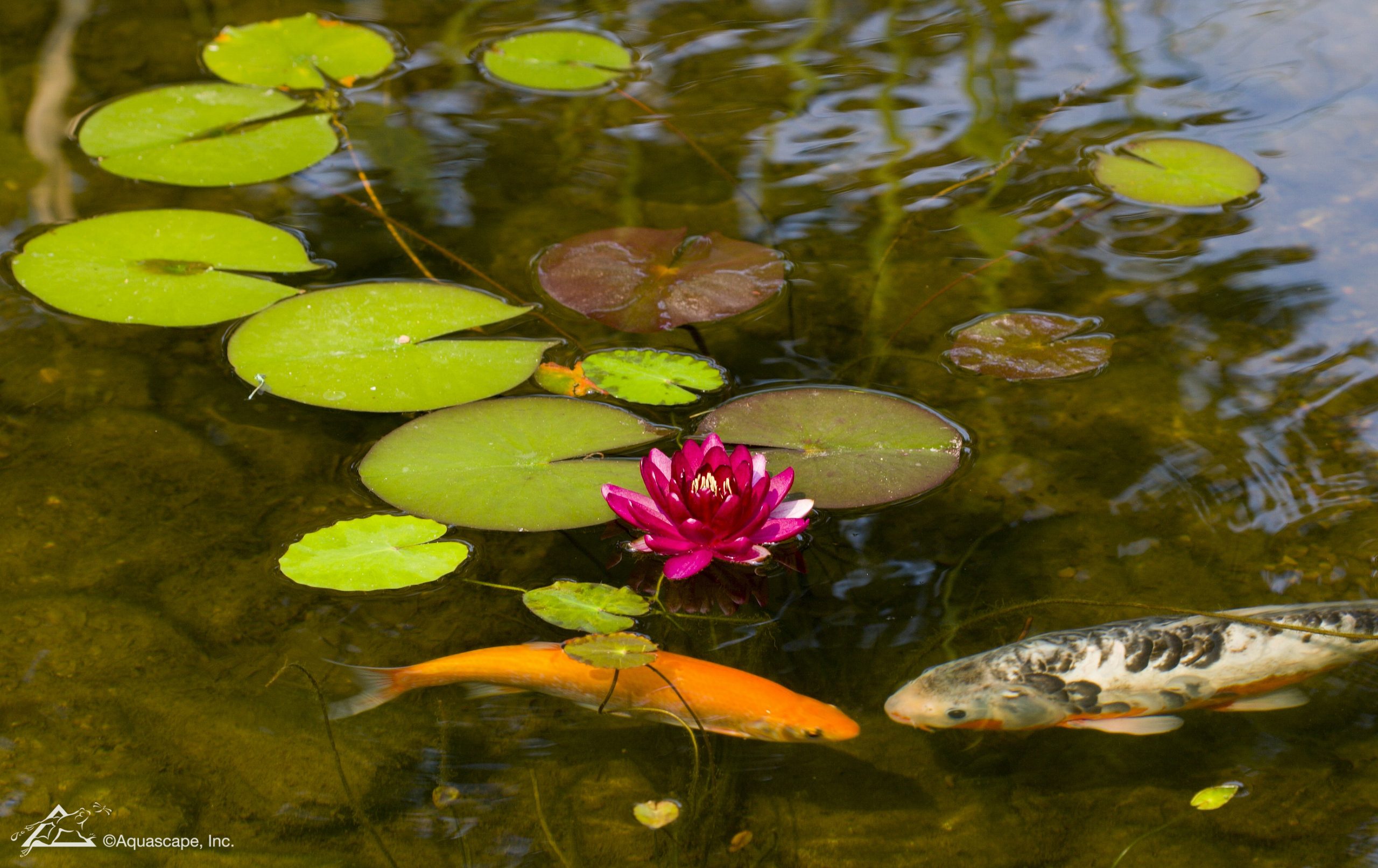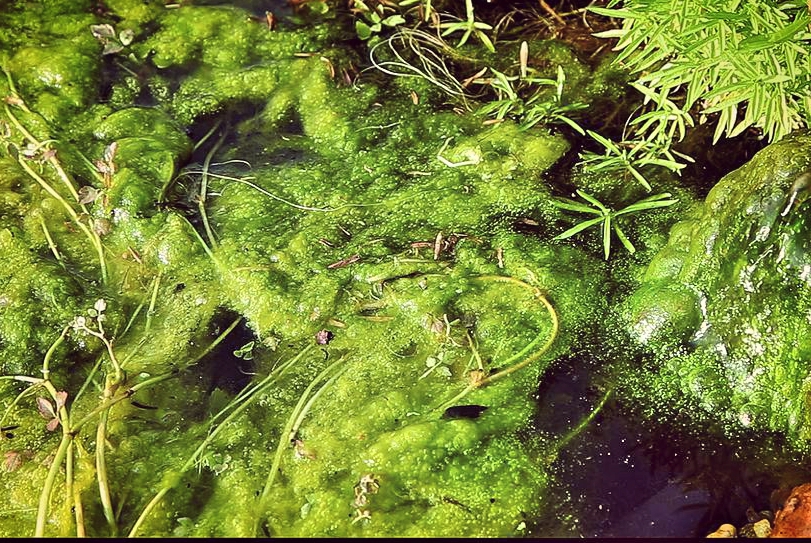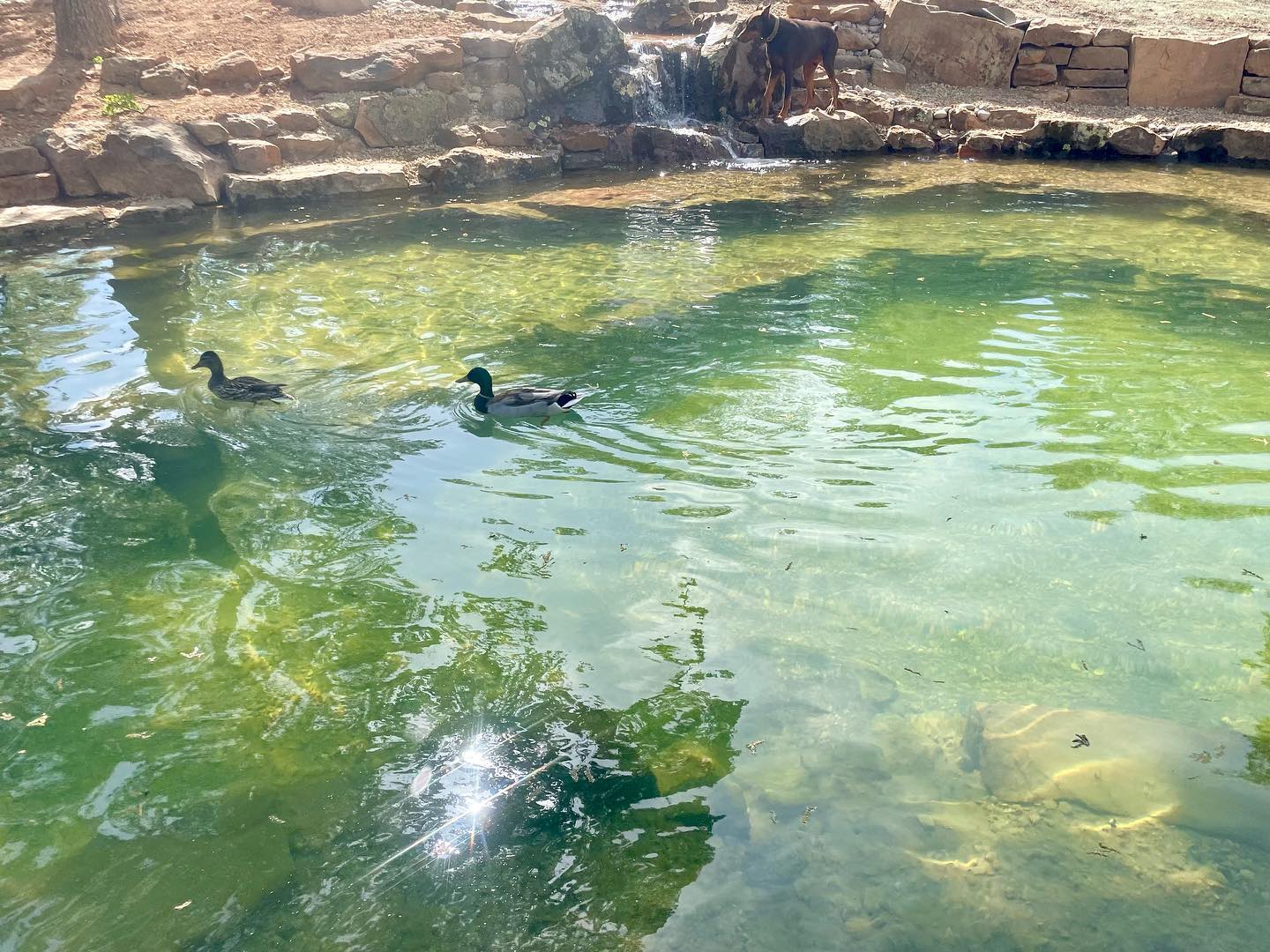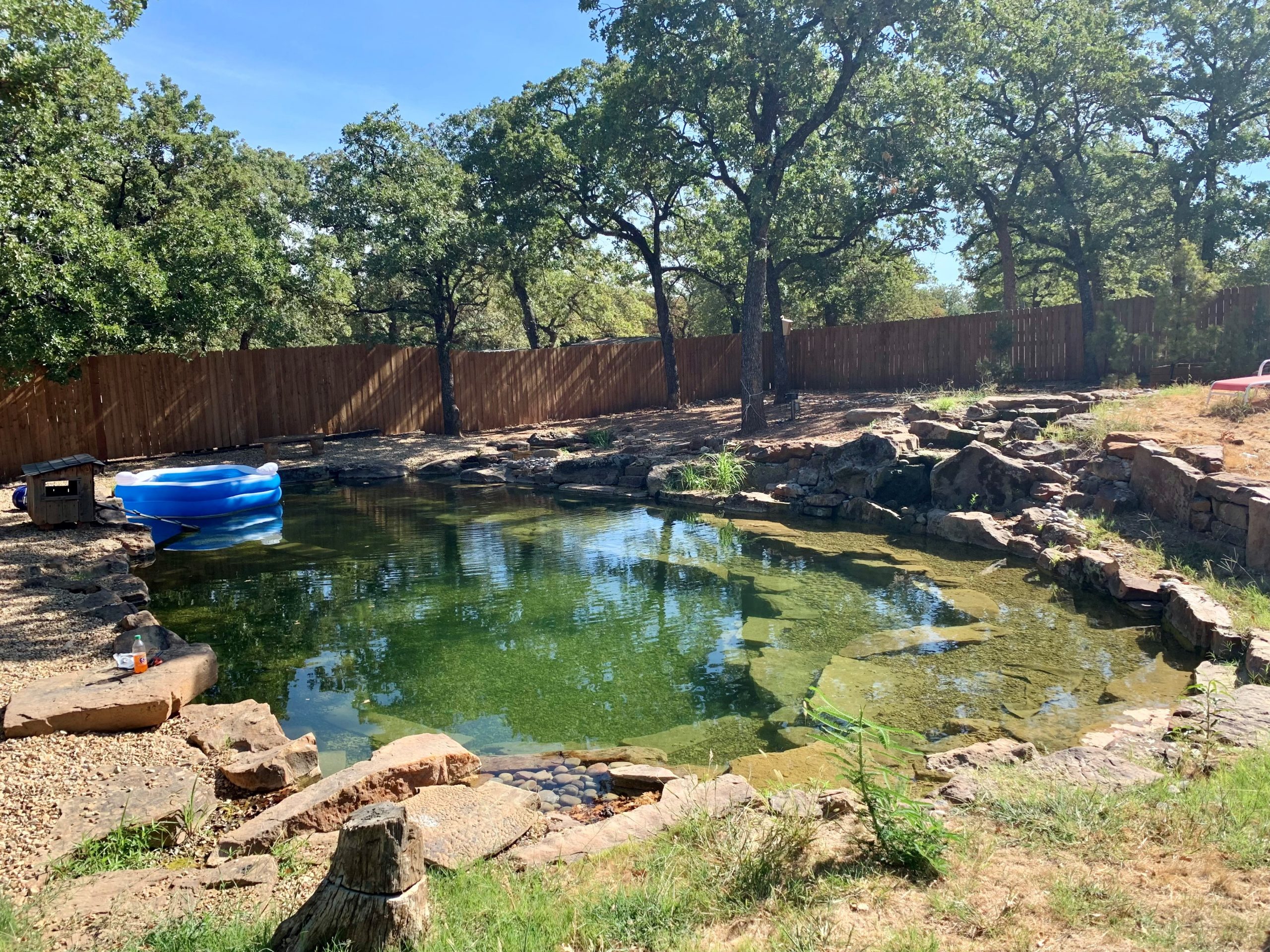Are your Koi fighting or loving?–How to recognize the difference!
How are your Koi this spring? Ahhh, Spring. Mother Nature is blowing a warm wind through the air. Flowers aren’t the only thing blooming, so is young love. It’s popping up everywhere, not just in the tulips and pansies, but also in your pond. That’s right, all that splashing around and displayed exuberant behavior is not your fish fighting, they are dancing around the idea of… spawning.
Spawning? Yes, you read that right. Koi fish, just like any river fish with a developed mechanism for river life, scatter their eggs everywhere rather than laying them in a neat and tidy nest, like other pond fish. The warming of the water, followed by longer hours of daylight, set off a biological trigger that “creates the mood”, if you will. These changes in ambience cause hormones to be released in the fish, causing the female to become full (gravid) of eggs and the male poised and ready for fertilization.
Surprised? Don’t be. Consider yourself lucky to have a front row seat observing the ‘wild ways’ of wildlife right in your very own backyard!
Shall we Dance?
The peacefulness of early morning is about to get a lot more interesting, now that Spring has sprung. You may notice an increase in activity in the pond during this time, particularly with your Koi chasing each other around the pond. The larger the fish, the more disruption that can occur. Upsetting pots, rocks and roots- in their rambunctious rowdiness, all in the name of love. The female Koi, she would be the “rounder” one, is “driven’ by one or more males, and even on occasion, during all the excitement, other females may partake in the pursuit of the female laying her eggs.
We know this sounds hectic and not terribly romantic, but it has to happen in order for the female to release her eggs. Female Koi do not have the ability to push their eggs out with abdominal muscles, so they depend on the pressure of being pushed around the pond, sometimes even into rocks or plant material. The males will even bump their heads into her flanks to provide a little extra “oomph” to help the process along.
One thing to keep in mind, spawning is a natural process, without setting up a “natural” habitat in your pond, it is highly unlikely, to almost impossible for her to spawn on her own. We aren’t suggesting a blanket of rose pedals, but the mood can be set by the environment for fish, as much as for humans. In plain liner ponds, with no decorative features or natural elements, the fish have no obstacles to spawn against and they may require artificially induced spawning hormones. Your Koi also appreciates a little privacy, so good plant and rock coverage that gives them a place to hide helps.
Looks like a (Koi) fight!
Most pond owners who are new to this arena, are shocked to see their Koi “fighting” each other one day, when in fact they are NOT fighting but rushing at each other in a spawn. Understandably, some females during this “amorous roughhousing” will endure a few abrasions, mainly on the face and flanks. These should quickly heal under two conditions.
First, be aware of your male to female ratio. Ideally, there should be two males to every female. Anything higher, means she’s the only gal in the pond, and she’s pretty much rushed all day. (C’mon ladies, you know how annoying this can be) Also, remove any female that gets run for more than four hours.
Secondly, water quality is important. Neutral, healthy water with little to no nitrogen will help to heal any injuries. If the water is too high in ammonia, nitrate or the pH is sagging low, the female will not heal well and infections are inevitable.
We know you care about your finned friends and though this process doesn’t seem as tender as one would envision, we assure you it’s completely natural for the Koi. Also, keep in mind rocks underwater are not nearly as abrasive as when above water. They develop a coating of slime called biofilm, and not only is it beneficial to both the pond and fish, but it also makes the rocks quite slick.
Keep the Koi
Kids Safe
Ok, so now that the deed is done, you may want to partially change the water. After a bout of spawning occurs, the water can get a bit foamy. In about 2 days, the eggs that have been released during spawning- will now hatch. These baby fish, or fry are so small, you won’t really be able to see them. If you have gravel in your pond, this makes a great hiding place for them to hide out, away from danger of being eaten by bigger fish. They will stay there for another day or so, using their yolk sac for energy, then when they are about 24-36 hours old, they will swim up to the foliage of the pond. If you do not have foliage, it’s going to be a short day for a fry. It’s important to remember that most of the eggs, and fry are not going to make it. After all, life’s not easy and nature is a rough and savage place (it’s like Game of Thrones in there). Fish eggs are a favorite snack for not only the adult fish in the pond, but also dragonfly, tadpoles, and frogs.
The fry that do make it, will eat microscopic plants and animals. If you have a pond with a coating of bio-film and a thin greenish layer of algae on things, the fry will have plenty to eat. They do grow fast, as long as they can survive. Some will due to color and cunning and they will live to join the shoal.
Joining the Family
Baby fish grow about an inch per month in the first year, especially in biologically filtered ponds with an abundant plant life and rich gravel bed to sustain them. When you have a clean, liner bottom, drained pond, expect few fry to live.
Of the babies that do survive, a very small percentage will have any admirable markings or colors. Of course, you’ll love them no matter what they look like, (just like any real mom would) but fish with distinctive beauty is very rare from spawned “homemade” babies in your pond. It’s likely that their coloring will be grey or brown, partly because the genes for that color are extremely common and let’s face it- its good camouflage for growing. Shall we call them “survival colors”? Either way, lower your expectations and leave the collectible Koi to the professional and talented breeders in Japan.
Let’s put it this way, in your pond of a hundred thousand offspring, a thousand will hatch, and a hundred will live to be seen by you. Of that 100, 10 will get big enough to catch with a net and of that 10, maybe one will be tolerable as a “keeper”.
Mixed Company
One thing to keep in mind if you have a pond mixed with Koi and Goldfish, Koi don’t get baby fever. Will they eat a baby fish? More likely yes, but mainly by accident.
Goldfish, on the other hand, are intentional cannibals, especially with big, juicy koi eggs and babies. If you keep your pond mixed; it is almost certain that any surviving babies will be of the goldfish variety, not Koi. So, if you’re hoping for a nursery or school (ok, cheap pun) of baby Koi this Spring, think about relocating your Goldfish to a new neighborhood. Contact us for more information.







Leave A Comment